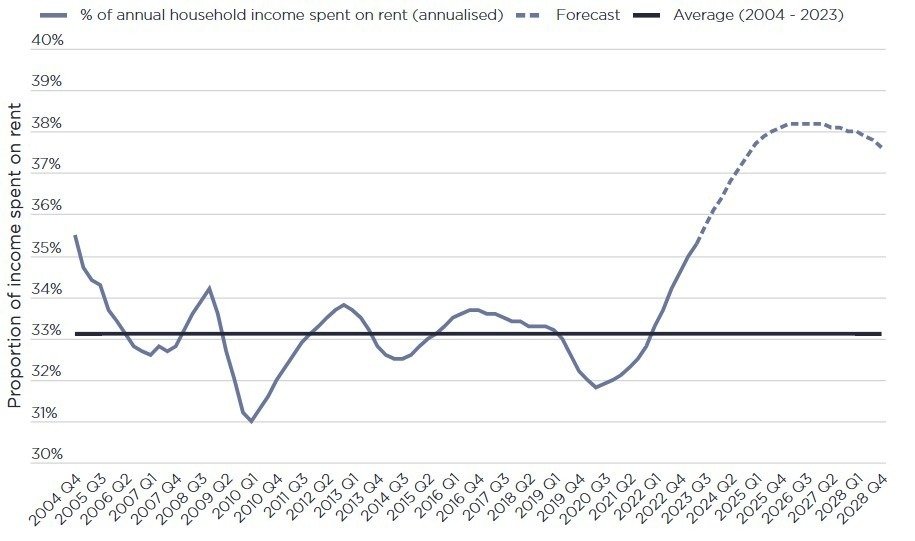The rental landscape in Europe is undergoing a significant transformation, characterized by soaring rent prices and a multitude of challenges affecting both tenants and landlords. In response to this dynamic environment, Savills, a distinguished real estate and letting agency, conducted exhaustive analysis of rental trends. The persistent imbalance between demand and supply, which is exacerbated by escalating interest rates, shapes the rental market. Savills analysis on rent trends provides valuable insights into the evolving rental dynamics in Europe.
Regulatory Changes and Tenant Redress
The recent expansion of the Housing Ombudsman Service in the UK represents a significant milestone in tenant-landlord relations. When landlords are now mandated to join the service and pay a fee, tenants gain access to free channels to address complaints.
The move is expected to bring 4.6 million new tenants under the ombudsman’s oversight. Despite the implementation of this new service, concerns have arisen regarding its ability to effectively manage the anticipated increase in demand and prioritise cases in a manner that aligns with the organisation’s objectives.
The government’s drive to reform the court system, as articulated by Jacob Young, aims to modernise the legal framework before the abolition of Section 21. Young defends these reforms as essential, emphasising the necessity for a digital system to enhance efficiency.
The phased implementation aims to address concerns raised by 2.4 million landlords, highlighting the delicate balance between tenant protection and landlord considerations.
Shift in Renter Demographics
BBC News reported an important shift in the renter demographics of over 30. As rents increase and property supply diminishes, tenants in this age bracket, earning between £30,000 and £70,000, increasingly opt for one- or two-bed home. This shift was attributed to housing scarcity, prompting a relocation trend towards more affordable areas.
Greg Tsuman, president of ARLA Propertymark, underscores the core issue of landlords exiting the market amid rising rental demand. The imbalance between supply and demand intensifies competition, prompting tenants to bid above market rates, and even pay a year’s rent upfront.
Savills’ Analysis of Rent Trends
Savills’ analysis portrays a bleak picture of the European rental market. Rent prices have surged by over a quarter since the onset of the Covid-19 pandemic, and are projected to increase by 9.5% by the end of this year and an additional 6% by 2024. The limited supply of properties, coupled with persistent interest rate hikes, is driving landlords to raise rent prices, resulting in intense competition among tenants. Emily Williams of Savills highlights the intense competition for housing stock, with tenants bidding upwards in an effort to secure tenancies. The affordability of rent is becoming a pressing concern, as Savills estimates that the average household in the private rental sector (PRS) is now spending 35.3% of their income on rent, a significant increase from 2021-22. In London, this figure rises to 42.5%, indicating a potential ceiling for affordability.
Average PRS household rent expenditures as a percentage of income

Forecasts and Economic Outlook
According to forecasts for 2023, the rental market is expected to be difficult, with rental growth reaching almost 7% during the first nine months. The progress of the Renters Reform Bill has been slow, and the rising cost of debt affects the profitability of landlords with mortgages. Savills anticipate a 6% increase in average rents by 2024, with annual increases gradually decreasing to a range of 2% to 3.5% from 2025 to 2028.
The Role of Institutional Landlords
Savills posits that institutional landlords and the build-to-rent sector are crucial in delivering top-notch rental accommodation amidst the challenges faced by private landlords. The PRS attracts institutional investors with a steady income stream and societal benefits, whereas the build-to-rent sector presents investors with opportunities to cater to a wide range of renters, given the growing and diversifying pool of tenants.
Insights from Savills’ Analysis
The sharp increase in rent across Europe is a multifaceted challenge, influenced by government reforms, shifting demographics, and the delicate balance between supply and demand. Savills’ analysis provides a comprehensive overview of the current landscape, emphasising the complexities of landlords and tenants’ faces. As the rental market continues to evolve, the role of institutional landlords and innovative solutions will become increasingly crucial for ensuring a sustainable and balanced rental environment for all stakeholders.

